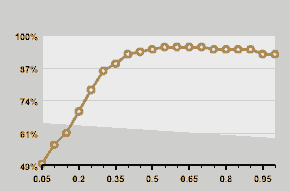My bond exposure is roughly 12.4% of my overall portfolio (age = 36) (excluding tiny positions in pssst Wellesley and Wellington)
Of that, about 35% of it is in I-series savings bonds, maybe 4% in Muni ETFs, 3% in a few bond ETFs and 58% in various preferred stocks.
I had liquidated most of my bond ETFs over the past few months in anticipation of the yield curve rise (some sold at the right time, a few others I waited too long), but I have added a few preferred stocks over the past few months. My reasons for adding those is because the rates range from 7%-8%+, and I was willing to add a few higher yielders (with some higher risk involved) to spruce up the overall portfolio yield.
These preferred stock fixed income positions, while somewhat vulnerable to other yields, don't fluctuate as much compared to the yield curve (unless rates go crazy and 10 year treasuries spike to 10%!). Since I purchased them at par or slightly under, I don't have a problem holding them for a long time, and don't have to worry about a fund manager selling them off when the coupon is at $.80 on the dollar and decimating the NAV of the fund.
The yields on the preferred stocks are high enough to handle most foreseeable rate curve advances in the future. And if rates jump THAT much higher, my overall fixed income position is relatively low, so I can just add some more fixed income to my portfolio at the higher yields and average things out.
many times you have to step back and look at the whole picture with a more detailed view
just take a look at how many dump bonds or anti-bond threads you can find right now.
you all seen and heard them, dump bonds they are only going down.
well how many actually look at the entire picture.
why do we have bonds in our portfolio ?
we have them because we want to maintain a certain range of volatility in our portfolio. we want a certain range so we can sleep at night when stocks fall as they always do. by maintaining a certain ratio of stocks to bonds if markets fall we can try to keep the losses in a range compared to 100% equities. .
well think about it. if we dumped all our bonds and moved to cash what would happen?
1: we would actually have a negative real return on our cash vs an even with inflation real return on bonds . you can lose 2% and still be no worse off .
but that isn't the real reason
2: the real reason is because bonds tend to move opposite stocks. when stocks tank bonds go up generally and we are not down overall as much.
well if we go to cash what do we have to do to maintain that same volatility swing in a downturn?
we have to sell stocks and hold more cash instead since cash does not produce capital gains . in fact in a bad downturn interest rates usually get cut .
you have to up your cash allocation at the expense of your stock allocations to maintain that same volatility swing .
If you were comfortable with a 50/50 mix of stocks and bonds you may have to go to a 40/60 or 35/65 mix of stocks and cash to get those swings back in line.
think about it, to keep your portfolio in the same volatility range you need to allocate more money to cash and tie it up at near zero than you would have to put in to bonds to accomplish the same volatility objective..
thats crazy, your stocks can go up so much more off-setting any drop in bond prices so why would you want to pull money out of your stocks to increase cash when less money in bonds protects you the same.
so what if bonds fall, the extra money still in stocks will make up most of that if not all of it and then some.
you can not use same allocation of stocks and cash as you had in stocks and bonds and expect the same swings in a downturn.

